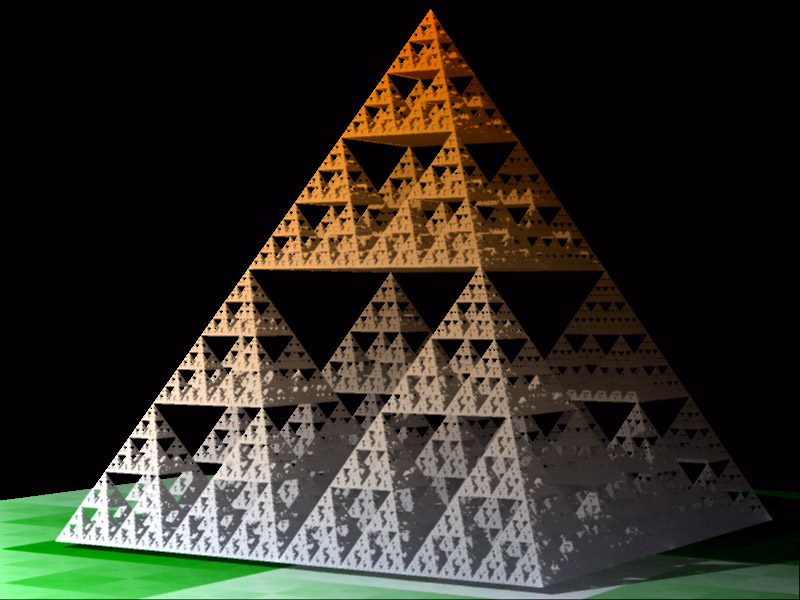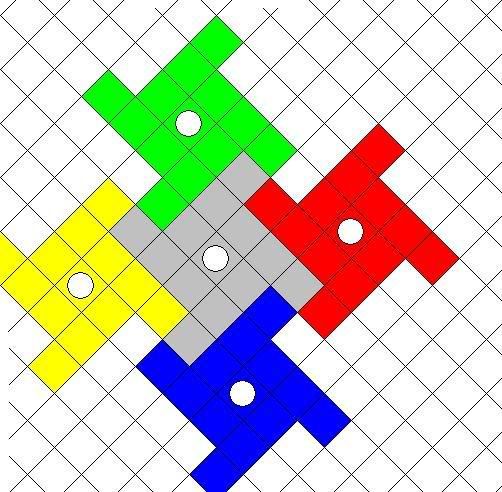Silv Something
Pi(e) Loving Maniac
There's the classic natural fractal.

The Triangle's cool, but the Pyramid cooler.


The Triangle's cool, but the Pyramid cooler.







What's a complex n-plane?
A vector in n complex numbers?
Presumably yes, because those are measurable sets.
 Integration and measure spaces aren't my strong point. Atticus should be able to help.
Integration and measure spaces aren't my strong point. Atticus should be able to help.That looks antisymmetric with respect to x/y axis mirroring.
How many squares are in the grid ThinkTank? Your picture has edges with lines which don't exactly describe squares. I also don't understand what you mean by symmetry of the tile. For that matter also, what do you mean by covering the plane?
I would say that we have several sets of thirteen tiles which will cover a plane with n tiles. So, we can't cover a plane with m tiles using that schematic where m is not a multiple of 13. It follows that the schematic should only work out purely as it does in theory in a game in rare cases.
I can see that we can change the sets of tiles which all look red, and consequently they come as symmetric in that respect. The same goes for the green tiles. If that's what you mean by symmetry, then several other sets can swap with each other. Also, if by symmetry you mean swapping sets of tiles like that, I think how many squares in the plane ends up mattering.
Sorry, I'm at a loss here. Could you explain?
Does Fubini's Theorem extend to functions in the complex n-plane?
